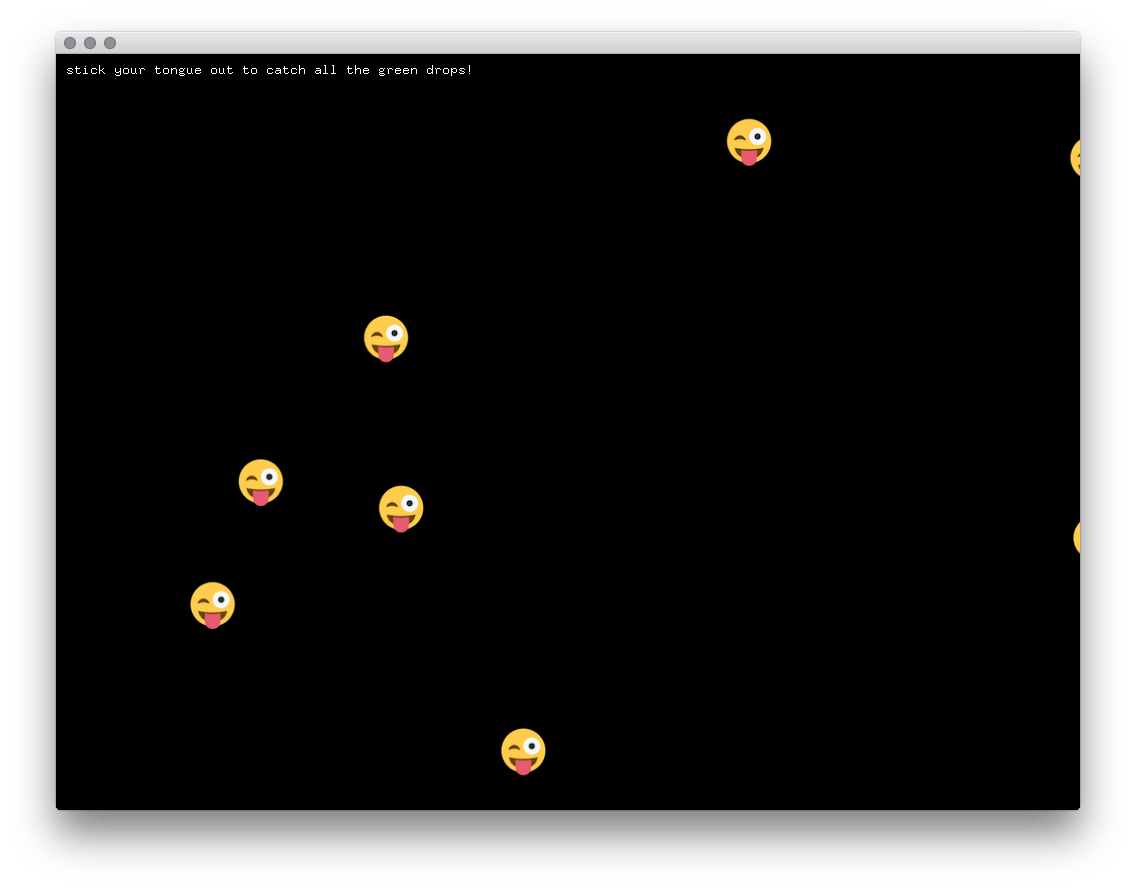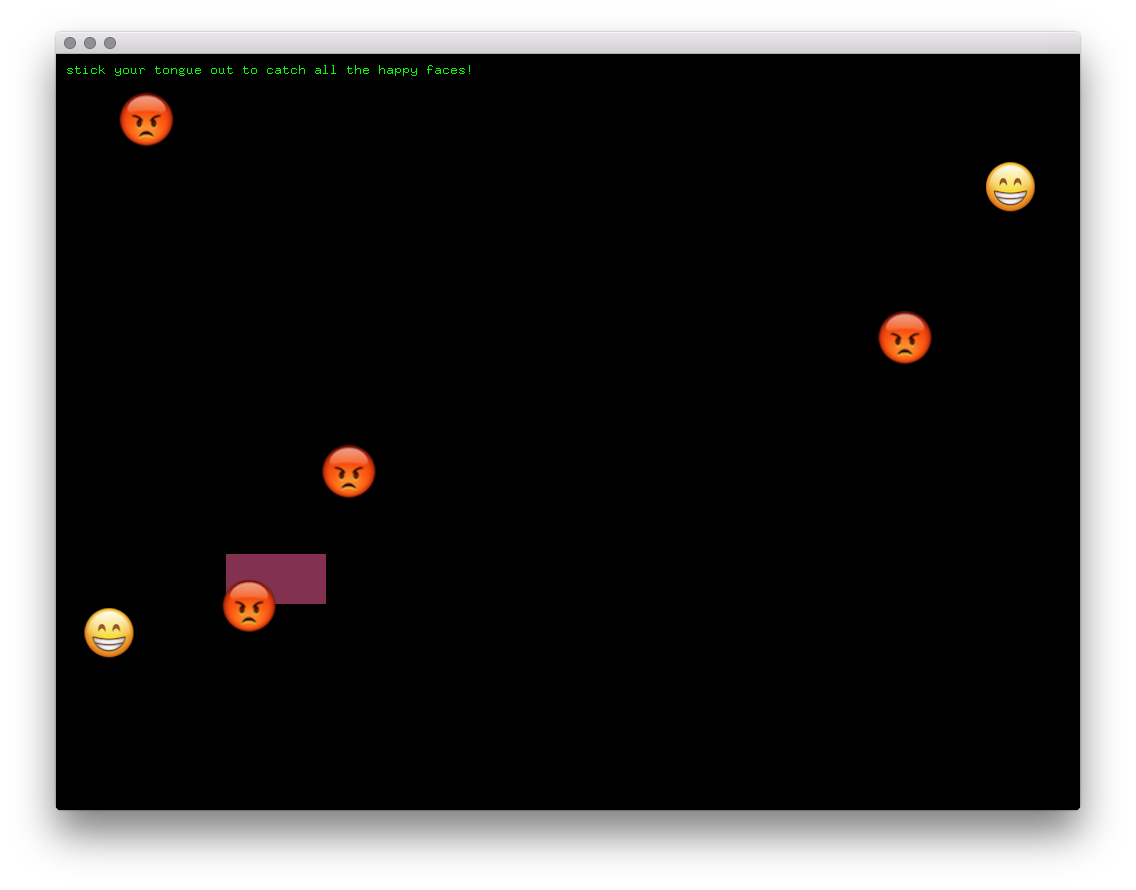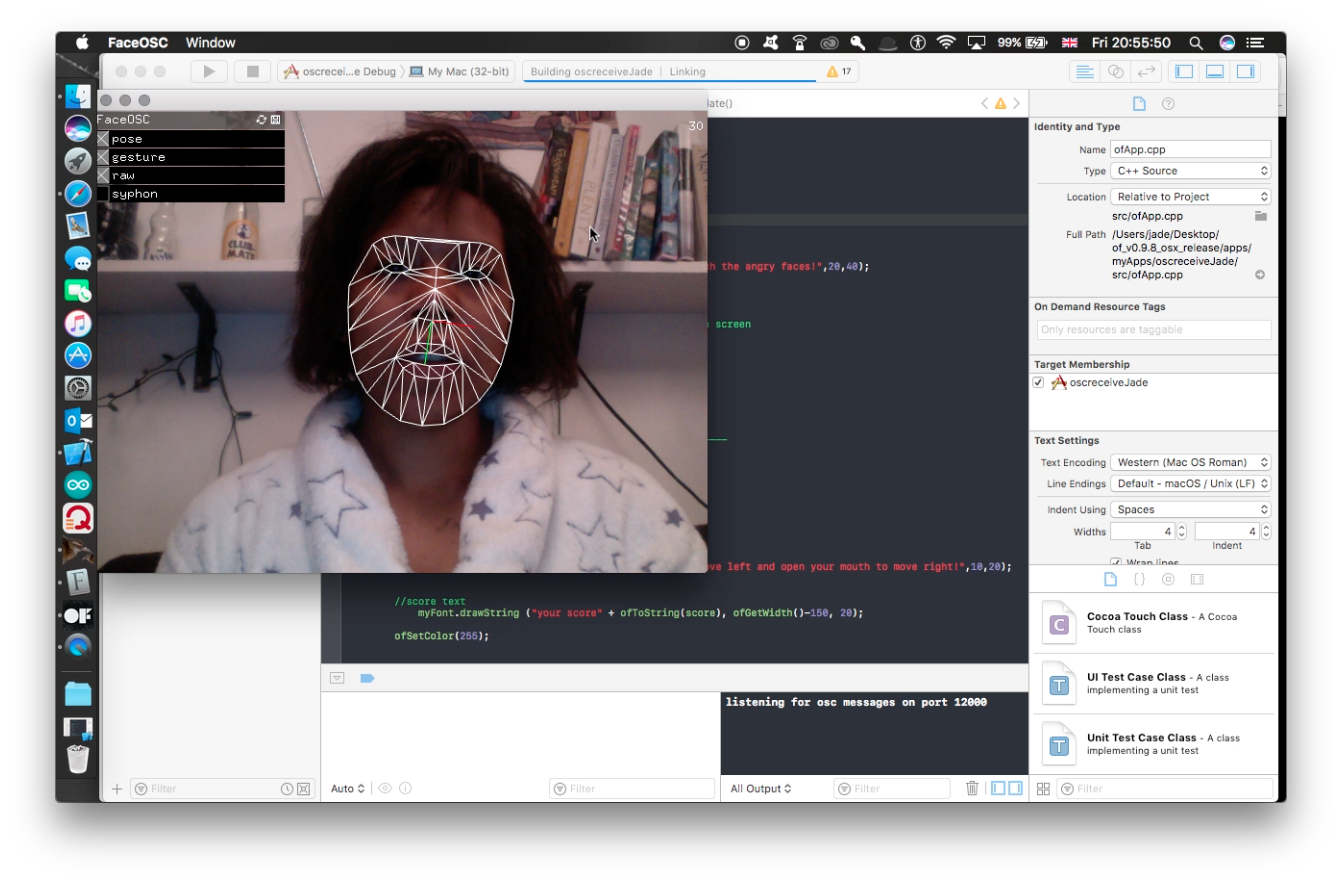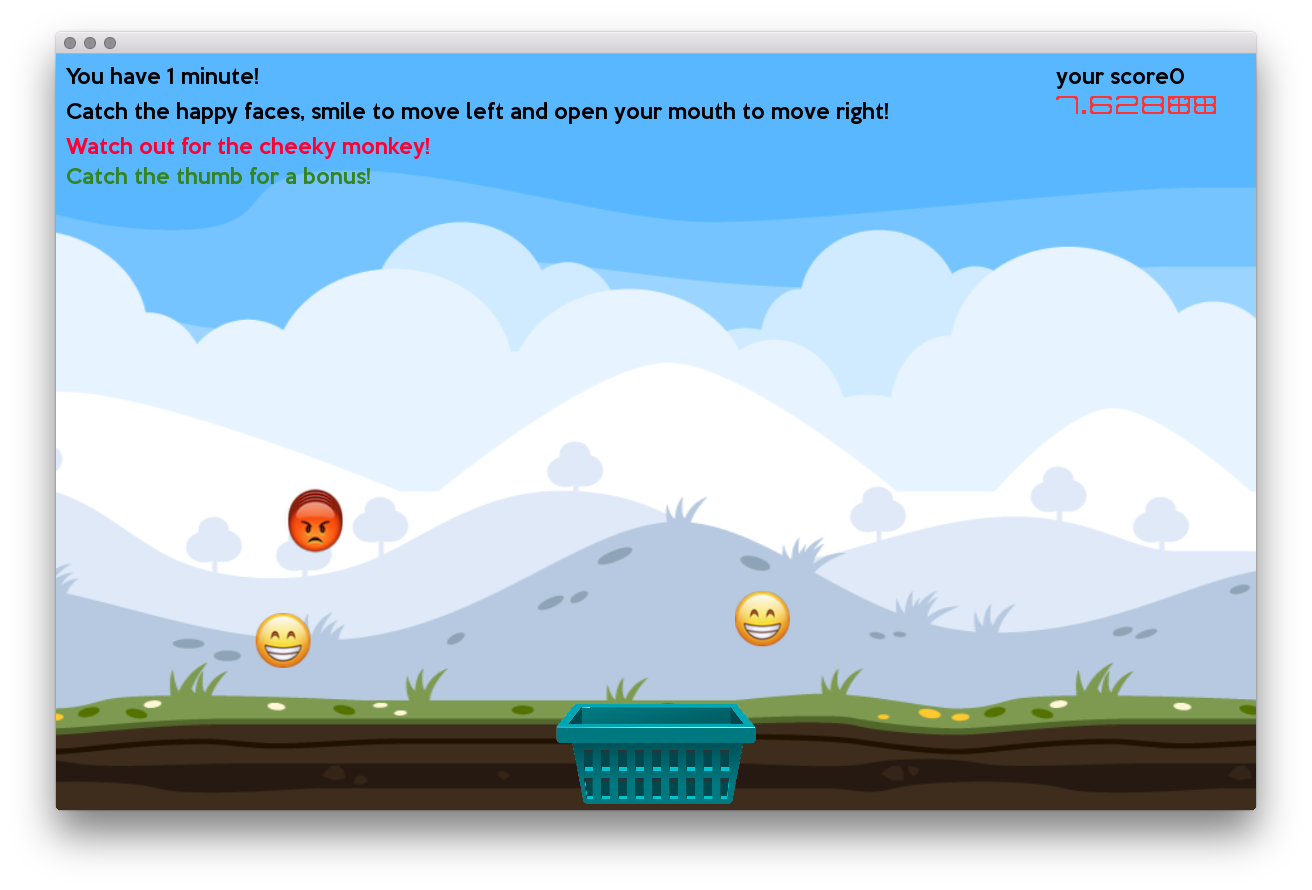Emojeez!!
A fun, interactive and accessible game for users who may have limited mobility and/or additional needs. Emojeez!! takes inspiration from the kinect and other device that are heavily controlled by bodily movements and instead lets the user play with simple facial gestures!
produced by: Jade Hall-Smith
Interactive gaming and accessibility
I have always been interested in assistive technologies and redefing assistive technology and what it does or can do for ther user. I questioned how I could create a game for people of all ages that would be fun to play, easy to understand and control. I have many friends who have limited mobility, who are either in wheelcahirs or have chronic pain and are unable to play games which require bodily movement, such as dancing games and/or the Xbox kinect or Nintendo Wii, and really wanted to make a video game that disabled users could really get involved with.
How?
For this, I used Wekinator and FaceOSC. I trained wekinator to pick up 2 different mouth shapes- One with my mouth widened and one with my mouth in an 'O' shape. Once effectively trained, I then brought the data into openframeworks and made the movements link to the location of the basket that catches the emojis.
Initial gameplay (collison detection not working well)
Inspiration
The aim of the game is to move a basket left and right to catch happy emoji’s. I was inspired by Eyewriter, an assistive technology piece that allows ALS patients (or those with mobility disabilities) to create fonts and graffiti with their eyes, which can then be light projected onto buildings. Google Glass's 'Brainpower' project also inspired me with the emotions game, whereby users get points for giving eye contact and for correctly identifying an emotion. It was a great inspiration to see fun, interactive assistive technology and I wanted to use this same concept within my own piece.
Future development
Creating emojeez!! was as enjoyable as making it as it was playing it! As a gamer myself, I would love to develop it further. There are several ways I could later explore and could further develop or change the code, for example, the implementation of power ups/downs and the introducing a level system and possibly saving high scores, like old arcade games allow users to save scores with their initials, again I would be using facial muscles to control the selection of the text.
References
Inital inspiration: http://www.brain-power.com (google glass autism project)
The main inspiration: http://www.eyewriter.org (eyewriter assistive technology in OpenFrameWorks)
Xbox kinect and Nintendo Wii




































































